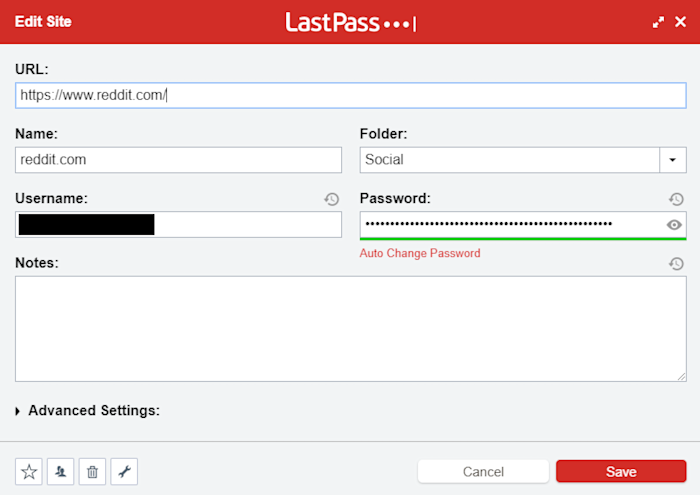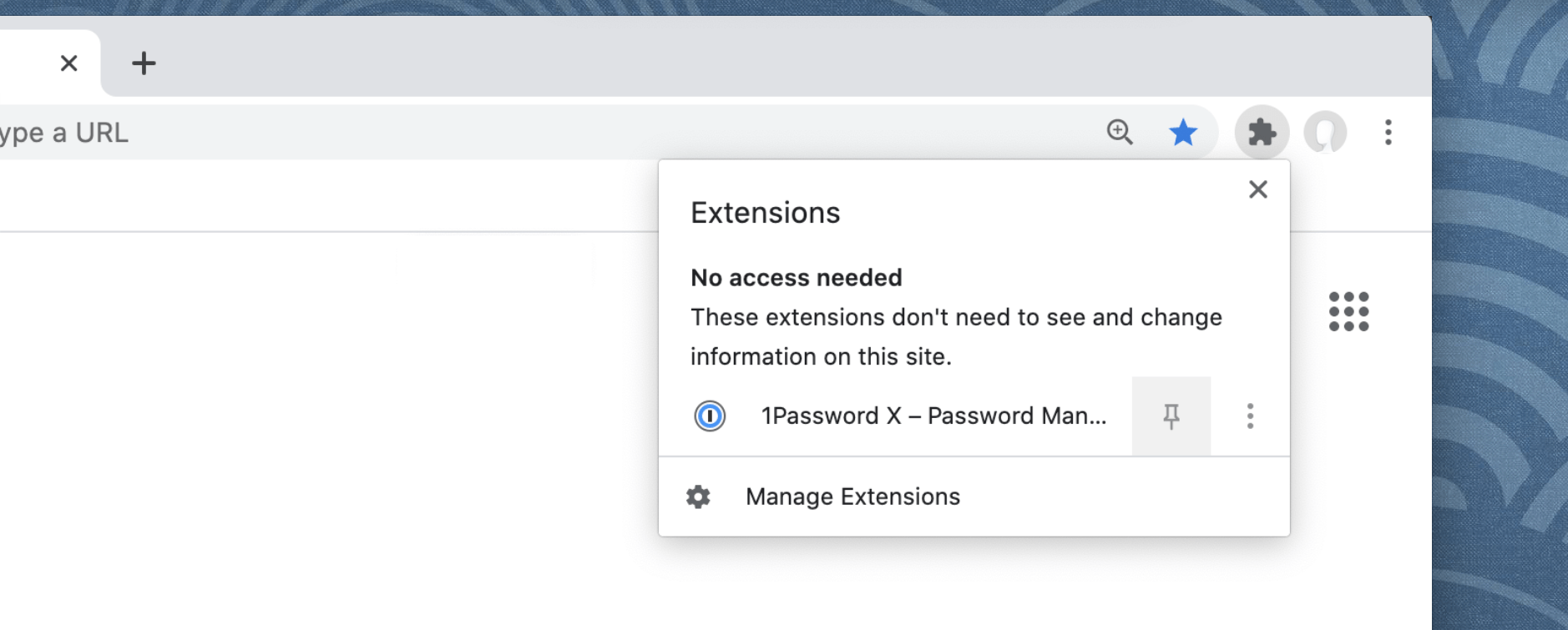1password X Opera
I’m a big 1Password fan, and it’s one of the things which kept me from using Opera 12.15 and below.
The new Opera is based on Chromium however, so it’s sorta-kinda compatible with Chrome extensions 😉
Note- I was able to install the extension using the instructions I’ve written up below.
I can’t guarantee it’ll work for you. It might very well corrupt your 1Password file, or do nasty things.
It will also be overwritten (and need to be run again) once Agilebits updates their Extension.
In Short – YMMV.
Description This extension requires a 1Password membership. If you don't have one yet, you can sign up when you install the extension and try one free. 1Password is a password manager that keeps you safe online. You want to use different passwords for every website, but it can be hard to keep track of them all. I was a long-time OLD Opera User -will not use new Chrome-derived version. Moved to Vivaldi as daily driver to good results been doing so for at least two years. The new stable version of Vivaldi, 2.3.x, does include the built-in option to prevent broadcasting IP for WebRTC. It has been there for a few versions now. 1Password X is an advanced version of the regular extension and can act as a standalone extension without the 1Password desktop app. It does require a 1Password subscription but it's one of the most affordable premium password managers on the market when you match the price against its features and the value it brings.
- First off, we’ll need to download the 1Password Chrome Plugin, from Agile Bit’s site
- Make sure you click the “Allow beta extensions” button.
Then, click the download button next to “Google Chrome”. - Opera will say *”Extension was disabled because it is from unknown source. Go to the Extension Manager to enable it.”*, click “OK”.
- Go to Window, then select Extensions, to open the Extension Manager.
- One there, the 1Password extension will be greyed out.
Press Install. - Close both the Opera Extensions window, and the Agilebits “Extension Setup” Tab.
Go to File, and choose “Close Tab” for both tabs.
If you do not do this step, when Opera re-opens it will re-open the Agilebits Extension installer , and re-install the default version of the extension.
This would undo the changes we make below, so make sure you close this 😉 - Quit Opera. Make sure you go to the Opera menu, and choose Quit, even if no webpages are showing.
- Open the Terminal (It’s in Applications, Utilities)
This will allow us to perform the additional steps necessary to load the extension.
You can also open the terminal through Spotlight if that’s easier 😉 - Move to the directory where your Opera Extensions are installed.
Enter the following command into the Terminal, and press enter. - Next we need to locate the 1Password extension we just installed.
The exact name changes, so we want to look for it in the “Info.plist” file that is distributed with the Extension.
The following “Find” command will search for it, then move to it’s directory. - Chrome has an “Omnibox” which combines the URL bar with Search.
Opera has something similar, but doesn’t let extensions talk to it yet – So we need to remove this code from the Extension, so it can load in Opera.
Run the two commands below in the Terminal. - Re-open Opera.
You should be all set at this point – The extension will need to sync, which might take a minute or two after clicking on the icon.
You might also find you have luck opening or closing the window which loads the extension.Notes-
I had initially thought that it would be a lot more complicated to port the extension, but Opera does not seem to have changed the internals as much as I thought.
For instance, 1Password uses tests such asThese work with “chrome”, not “opera”.
The most complicated part is that Chrome 15 does not have the Omnibar property.I’m not an expert, but there appears to be a few other cases where the extension could be updated to use more recent methods, such as moving sendRequest -> sendMessage, or chrome.tabs.getSelected -> chrome.tabs.query.
In all, it appears to work, however.
It will prompt you again in a little pop-up. Press install again.
Make a note of the version- In the case of our screenshot, it’s such as 3.9.20.2
If the plugin updates later, and this version has changed, you’ll need to re-run these steps.
1Password works everywhere you do. Easily sign in to sites, use suggested passwords, and find what you need. Everything is available at your fingertips.
Get 1Password for:
If you’re using Safari, get to know 1Password for Safari.
Save a login
To save a login, enter your username and password. Then choose Save in 1Password.
To update an incorrect or incomplete login, make your changes, then choose Save in 1Password and click Update.
Fill logins and other items
To fill an item, click and choose it.
If 1Password suggests more than one item, you can use the arrow keys to select the one you want.
Or start typing to find it.
Use a suggested password
1Password suggests strong passwords when you’re changing a password or signing up for a new account.
To use a suggested password, click in a password field and choose Use Suggested Password.
Create a custom password
You can use the 1Password pop-up to create custom passwords. To open the pop-up, click in your browser’s toolbar.
To create a custom password, click and choose Password Generator.
Adjust the settings for your new password, then copy it to the clipboard or fill it on the page.
To see all the passwords you’ve created, click Generator History below the password generator.
Search 1Password
Searching is the fastest way to find what you need in 1Password.
To search in 1Password, open the pop-up and start typing.
To cancel the current search, clickor press Esc.
View and edit items
To view an item’s details, click it. Or use the arrow keys to select it.
To mark an item as a favorite, click .
To copy any field, click it.
To open the pop-up in a new window, click .
To show a field in large type, click to the right of it, then click Large.
To reveal a password, click to the right of it, then click Reveal. Or press Control-Option (or Ctrl + Alt) to reveal all passwords in the item details.
To edit an item, click Edit. The item will open in a new tab, where you can add tags or custom fields, move it, or delete it.
Use drag and drop to fill in apps
To fill in an app, drag your login details from 1Password to it. For example, drag your password to the password field in the app.
You can also use drag and drop in your browser. Fill answers to security questions, membership numbers, and more.
Fill two-factor authentication codes
You can use 1Password as an authenticator for a site that supports two-factor authentication. First, find the site on 2fa.directory and follow the instructions to turn on two-factor authentication for the site.
When you see a QR code for 1Password to scan, click to scan it.

Switch accounts and vaults
To see a list of your accounts and vaults, click > Vaults.
To see everything, click All Vaults. To see only the items for a specific account or vault, click it.
To set which vaults are included when you view All Vaults, click next to All Vaults, then adjust the vaults under Accounts and Vaults.
Use Watchtower
Watchtower tells you about password breaches and other security problems on the websites you have saved in 1Password.
If any of your items require action, you’ll see an alert banner with more information at the top of the item in 1Password.
To get alerted when a website you have an account for is added to Watchtower, click > Settings. Then turn on “Watchtower alerts”.
Lock 1Password
When you’re done using 1Password in your browser, you can lock it. To lock 1Password, click > Lock 1Password.
1Password will automatically lock when:

- you quit the browser
- you don’t use your computer for a certain amount of time
- your computer sleeps
Manage your settings
To manage your settings, click > Settings. You’ll be able to:
- Change your auto-lock settings
- Check for vulnerable passwords
- Change the language
- Adjust the toolbar button appearance
- Change which item list 1Password opens with
- Allow notifications
- Set a keyboard shortcut to open the pop-up
- Adjust how 1Password behaves on web pages
- Add and remove accounts; adjust All Vaults
- Make 1Password the default password manager
Get help
If you don’t see the 1Password icon in your browser’s toolbar
If the 1Password icon is missing from your browser toolbar, you can customize the toolbar to make it visible.
If your browser’s built-in password manager is interfering with 1Password
1password X Operating

If your browser’s built-in password manager is interfering with 1Password, you can turn it off. Click in your browser’s toolbar, then click > Settings, and turn on “Make 1Password the default password manager”.
If you use different passwords for additional 1Password accounts

When you unlock 1Password in your browser, only accounts using the same password are unlocked. To unlock an account that has a different password, lock 1Password, then unlock it using the password for that account.
1password X Or Extension
To make sure you always have access to your 1Password accounts, use the same password for all of them. If you signed up for accounts with different passwords, you can change them.
1password X And Desktop App
Learn more
